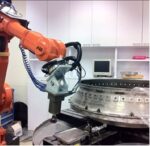Reflecting on 2025: Circularity, Sustainability and Transformation for Steel Manufacturing
Troy Coyle, CEO, HERA As 2025 draws to a close, it’s clear this has been a year of transformation and momentum for Aotearoa New Zealand’s steel manufacturing industry and for HERA. The national conversation around sustainability and circular design has matured significantly, with steel once again proving itself to be the rockstar of the circular economy. One of the biggest milestones for our sector was undoubtedly the announcement of the Electric Arc Furnace (EAF) at New Zealand Steel. This long-anticipated investment represents a major step forward for domestic steelmaking, enabling the production of lower-carbon steel from locally recycled scrap. It’s a tangible example of how industry can decarbonise while strengthening regional manufacturing resilience. The EAF signals a new era where circularity, innovation, and sustainability sit at the core of our national manufacturing. At HERA, we’ve seen that growing interest in low-carbon and circular design first-hand. Our newly released update to “How to Specify Low Carbon Steel” guide, has rapidly become our most downloaded publication, reflecting the appetite among engineers, designers, and specifiers to make informed material choices that reduce embodied carbon. This surge in demand shows that Aotearoa New Zealand’s construction and manufacturing sectors are ready to move from ambition to action. Circularity goes beyond just lowering emissions. It’s about designing systems that keep materials in use for as long as possible and few materials perform better than steel in this regard. That’s why one of HERA’s proudest achievements in 2025 was launching our Low-Carbon Circular Design Guidance. This guidance provides a practical framework for designers and manufacturers to apply circular economy principles in real projects, helping to close the loop between design, fabrication, and reuse. It showed that >50% reductions in carbon emissions were readily achievable through clever design and material selection. This work has been further strengthened by our successful application for […]










